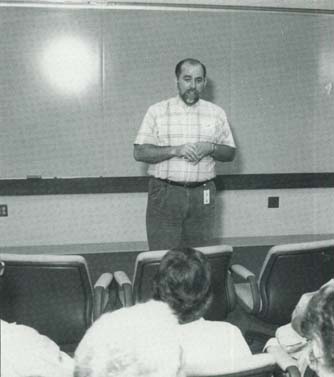Protons Provide Effective Prostate Treatment

Loma Linda University Medical Center has initiated a support group program before, during, and after treatment for prostate cancer patients. Over a six- to eight-week period, the group gets together for mutual help
Prostate cancer is the most common cancer among American men and ranks second in cancer deaths. About 125,000 men will be diagnosed with prostate cancer this year, and about 35,000 will die from the disease. But this does not have to be - early detection can make a significant difference and proton therapy can effectively treat and often cure the disease.
Seeing the need for a multidisciplinary approach to treatment programs for patients with early, localized prostate cancer, Loma Linda has established a Joint Urology/Oncology Clinic as an outgrowth of increasing frustration and confusion among prostate patients who are offered conflicting treatment options for their disease.
"We saw the need to bring these disciplines together to improve the overall outlook for patients with prostate cancer," said Dr. James M. Slater, director of the Loma Linda University Cancer Institute. Recent advances at LLUMC in the use of high-precision proton-beam therapy makes it possible to treat a large number of patients and develop closer cooperation among the urologic and radiation oncologists.
Loma Linda has treated more than 250 prostate patients with proton therapy. Protons offer an effective alternative treatment to surgery and conventional radiation therapy. Because of the prostate gland's location - at the outlet of the bladder and anterior to the rectum - conventional radiation can cause side effects such as diarrhea, rectal irritation (proctitis) and/or urinary frequency or burning sensations. With protons, heavier doses and distribution can be delivered directly to the prostate.
With so many prostate patients being treated at the same time, Loma Linda has initiated a support group program before, during, and after treatment. The new program provides an opportunity for patients to discuss their feelings, reactions, treatments, and other concerns with each other and a professional facilitator.
Over a six-to eight-week period of treatment, about 30 men (some with their wives) get together weekly and help each other. Besides their positive outlook and enthusiasm for proton therapy, these men also report that weekly PSA (Prostate Specific Antigen) blood test results continue to show lower numbers (0-4 reading is considered normal). Most of the men at Loma Linda started out with unusually high PSA levels (25 or higher), but after six weeks of proton therapy, their PSA levels were reduced to near-normal single digits. This is a clear demonstration that proton treatment is effective and works without any harmful side effects.
The men in the support groups at Loma Linda are shining examples of vitality in the midst of treatment for a disease that does not have to be fatal.


